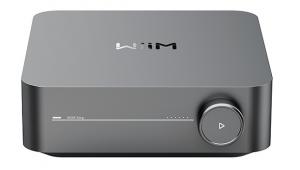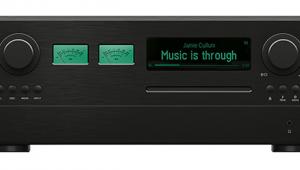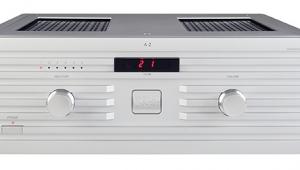Copland CSA100 USB DAC/Integrated Amp

 In what is looking like it might be a trend – tube hybrid integrated amplifiers – Copland joins in with a Danish beauty at a sensible price, the all-singing, all-dancing CSA100
In what is looking like it might be a trend – tube hybrid integrated amplifiers – Copland joins in with a Danish beauty at a sensible price, the all-singing, all-dancing CSA100
Three thoughts hit me as soon as I switched on the Copland CSA100 integrated amplifier. The first was that it was an all-embracing, do-everything tube/transistor hybrid like the Vinnie Rossi L2i-SE [HFN Jul '20], rated at a similar 100W/8ohm if at a fraction of the price, at £3498. The second was that I want it to kick off a fashion for cool, fully-loaded integrated hybrids because they are the smartest option for offering the best of the tube/solid-state worlds. The third is the realisation that I need to look deeper into hi-fi system building.
How did the systems issue pop into my head? Because – as with the Vinnie Rossi and other assorted items – I found the CSA100 forming part of an unlikely combination, one that would not simply emerge intuitively on paper, or be created by market forces as were the old Dual/NAD/KEF or Linn/Naim systems that were de rigueur 35 years ago. The Copland CSA100, with its FET/triode tube preamp and bipolar transistor power amp stages, so perfectly suited the 'accidental' mid-priced system in which it was reviewed (more anon) that I realised what a minefield system building remains despite reviewers, retailers, common sense or other aids.
Power Of Ten
Think about it: if you narrowed your choices for a new system down to two possibilities for each component type, at a minimum of CD player, turntable/arm, cartridge, amp and speakers – you would be faced with ten possible combinations to audition. What the Copland CSA100 does is remove the variables of headphone amp, DAC, phono stage and, if you like matching units, CD player, because Copland's even shares the CSA100's remote.
I must reiterate – this unit considers everything, even giving you such extras as a balanced input, a separate pre-out and a tape loop, which equates to fixed and variable outputs for system expansion, and a choice of two optical, one coaxial and one USB-B digital input. The latter will hook-up to a PC or Mac or standalone 'music library' such as those in the Melco series, although wireless streaming will be served by the forthcoming optional aptX HD Bluetooth module. Analogue is handled by three line inputs (including tape) and MM phono, with an earth tag.

Let's start with what it doesn't have – an MC stage for the phono input. I used it with the usual high-gain MCs and normal MMs, and it even provided sufficient gain to accommodate EAT's Jo No5 MC [HFN Dec '18] up to a point. While the analogue user is well-served, it's the digital devotee who will have a blast with this. Select a source via the remote or rotary selector and your choice will be indicated by the appropriate blue LED on the 'wheel' in the middle. Choosing 'digital' enables the DAC and lights up the LED at 3 o'clock, as well as the LEDs beneath the small toggle on the fascia's lower left corner. Other LEDs indicate lock status and DSD file types.
Pure Instinct
The rotary selector itself chooses between the various digital inputs, clockwise from the left being BT for the forthcoming Bluetooth module, followed by LEDs for coaxial, the two Toslink optical inputs and USB. I stuck with coaxial S/PDIF, which afforded a sound more in line with the overall character of the CSA100 via the line inputs and the phono stage.
For any seasoned hi-fi enthusiast, set-up will prove instinctive. Multi-way binding posts for the speakers, clearly-labelled inputs, an IEC mains inlet – there is nothing to adjust or worry about around the back, and one of two only minor warnings includes a circa-35sec warm-up should one anticipate instant sound. The other point to bear in mind is that the CSA100 is phase inverting, courtesy of its double-triode line/preamp. If you think you, or your speakers, are fussy about absolute phase then this is another consideration to stir into the mix.
But returning to my theme of system matching and here there's a sage lesson to be learned – at least, there was for me. This is because the CSA100 thoroughly trashed the oddball notion of 'spend 80% of the budget on the turntable and the remaining 20% on everything else'. For me, a sense of balanced disposal of one's budget has vanquished it.
![]() Go All The Way
Go All The Way
Adherence to relative value and system building in context have thus become causes célèbres as far as I am concerned. With a £3500 integrated amplifier as the subject of the review system, I used a MacBook Air and a vintage Marantz DV8300 multi-format player for digital sources and the EAT B-Sharp turntable [HFN Jul '20] with Jo No5 as the analogue source (£2000 combined).

























































